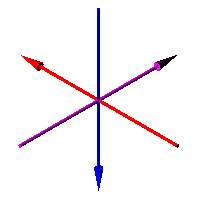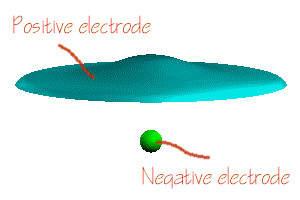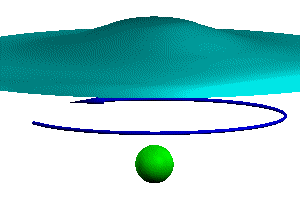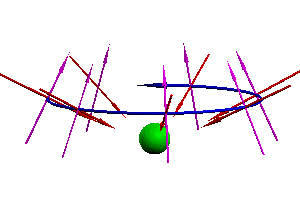


Does the Homopolar phenomenon
share similarities
with the Biefield-Brown effect ?
Luc Lachapelle
![]()
|
Background information
The
Homopolar Phenomenon ...
This effect has been brought forward by Michael Faraday in the years 1820. The Homopolar phenomenon can be explained in few words by outlining the intrinsic relation between the electric field and the magnetic field.
I theorize that the flowing electric current in relation with the flowing magnetic flux imparts a flowing motion to the Aether which by reaction provokes a displacement in the same direction of the physical mass. The relationship between these 3 flows can be observed in many other instances.
The
Biefield-Brown effect ...
This effect has been investigated upon as early as in 1924, by Paul Biefield, Director of the Swazey Observatory ( Dennisson University ) and Thomas Townsen Brown, collaborator and dedicated independent researcher. Their research has since been often cross-documented and eventually has grabbed the attention of the US Air Force. This E gradient effect relates to the kinetic reaction of dielectrics, to exhibit a thrusting power when charging to a higher potential. In a planar capacitor, when charging, always exhibit a forward trust toward the positive electrode. The effect can be intuitively best explained when considering the Aether's flow through the system, which is absolutely distinct from a probable ion flow around the embodiment. In fact such a system will continue to produce thrust in a hard vacuum, albeit the trust is said to be significantly reduced ( by many order of magnitude ). T.T. Brown has determined through extensive laboratory experiments that
the effect strength was dependant on the following criterias : T.T. Brown used a capacitor fabricated from a vast number of lead (
oxide ? ) foils laminated throughout the entire surface of the canopy.
Most probably he wanted to reach the highest capacity value as possible
for his capacitor ( it is well known that the capacity is at its highest
value when the dielectric is the thinnest as possible ). Additionally,
since both electrodes was also separated by air, this feature enabled
sufficient electric isolation in order to bring the canopy to a high
electric potential.
The
similarities
I also anticipate that the effect should be more pronounced with an
increased speed of the electron, and the use of " HIGH K " materials like
the ferroelectric dielectric Barrium Titanate compound ( BaTiO3 ) or an ambient temperature Charge Density Wave
( CDW ) material.
Furthermore, the fact that the effect's strength diminishes
considerably in the hard vacuum substantiates the prerequisite of a
intense electron flow in the system, as the air is a much better electric
conductor than the vacuum. This has been recognized by researchers in the
MHD field ( Magneto-Hydro-Dynamic ) where, in order to have a reasonable
flow of ions around an airship fuselage, the plasma has to be seeded with
a radioactive particle, such as Cesium, to increase its conductivity and
augment the Lorentz force.
All of the above has been taken into consideration in the design of a
differently new system I am investigating, one which I theorize and hope
will exhibit a continuous and strong thrusting action. This project is
actually what pushed me to study the Homopolar phenomenon, as I was in
need for a autonomous and reliable electron pump, the conclusion of which
is the Dynamotor.
I hope you find this information useful, and I extend to all my
kindness regards. |







